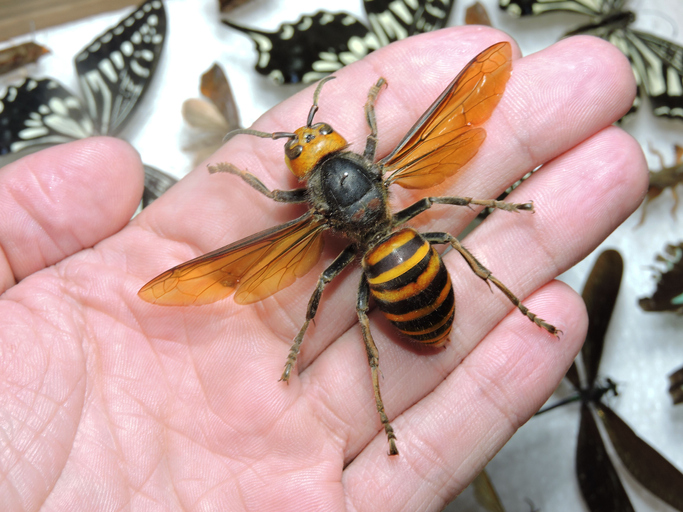Department of Agriculture's analysis of hornet nest shows how rapidly they can multiply
Imagine one murder hornet nest this year turning into 60 next year. That is a very real possibility based on what the Washington State Department of Agriculture found when it analyzed the tree that contained the hornets’ nest.
After tracking an Asian Giant Hornet – which has been nicknamed the “murder hornet” – to its nest and eradicating it, the Washington State Department of Agriculture released the details of what was in the nest. The results demonstrate how difficult it will be to completely eradicate the hornet from our region.
Removing the comb, Agriculture staff found 76 hatched queens and another 108 unhatched hornets, most which were queens. This is troubling because it indicates that one hive can turn into about 60 hives the next year.
At the end of the year, the existing queen lays eggs to create new queens. When those new queens hatch, they soon leave the hive to find a new nest where they will spend the winter. When spring arrives, they will start a new hive of their own. Not all queens survive or are successfully mated, however. Researchers at Penn State University note that “queens fight off the males, which results in a large percentage (up to 65%) not being fertilized.” So, even if there are about 180 queens in the nest, about 60 will end up being mated and able to start a hive the following year.
Still, that is an incredible number. Honeybees multiply by swarming, when the existing queen takes half of the bees in the hive and they find a new nest. Very productive honeybee hives swarm twice a year, and many won’t swarm at all. So, very productive queens can create three hives by the end of the year.
Based on what Agriculture staff found, Asian Giant Hornets, by way of comparison, can turn one hive into 60 the following year. The lead entomologist Sven Spichiger said the number of queens, “does give one a bit of pause.” Indeed.
Penn State also has this interesting note on the name of the hornet:
As far as any entomologist in the United States can tell, "murder hornet" was not used in English prior to the NY Times article. Therefore, it is not recommended to refer to V. mandarinia as "murder hornets". "Asian giant hornet" is somewhat problematic as Vespa velutina has the common name "giant hornet", which may lead to confusion. Until the Entomological Society of America (which governs the use of common names for insects in the United States) decides on the official common name for V. mandarinia, the author suggests the use of "sparrow wasp" or "sparrow hornet" as it is distinctive, reflects a name used in the wasps' native range and does not carry the sensationalist tone of "murder hornet".
It is fortunate that Agriculture staff were able to find and eradicate the nest when they did. It prevented a huge of number of queens from starting new hives. Unfortunately, they can’t be sure that nest was the only one in the region. If the hive they found is typical, there could be a significant number of queens preparing to start hives next spring.
If you live in Whatcom County, consider partnering with the Department of Agriculture as part of their trapping program.




